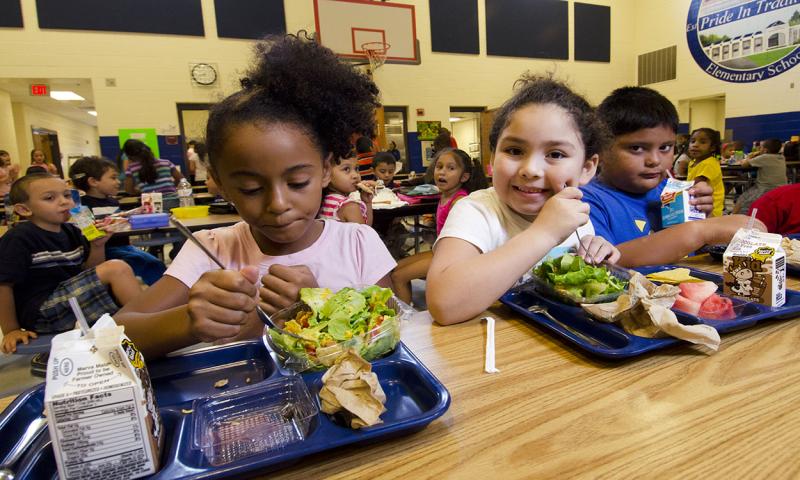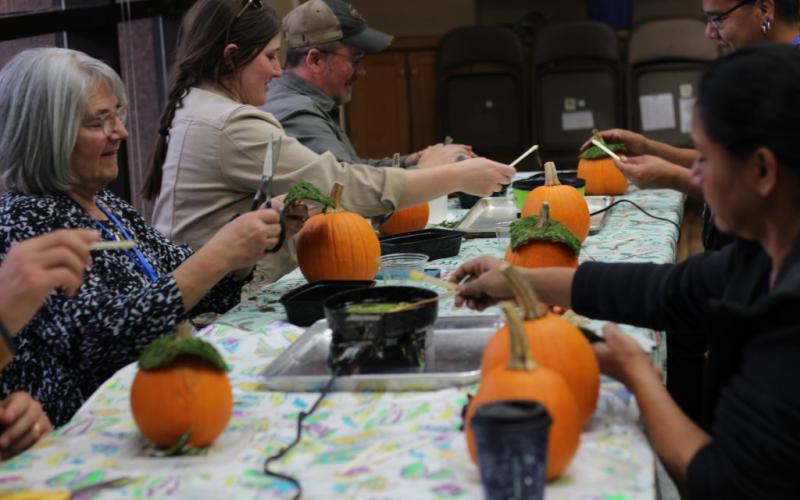Originally written by Jennifer Folliard, former SDSU Extension Family & Community Health Field Specialist. Updated by Anna Tvedt, former SDSU Extension Nutrition Field Specialist.
What is National School Lunch Week?

National School Lunch Week (abbreviated as NSLW) is celebrated each year in October. It was created by President John F. Kennedy in 1962 to promote the National School Lunch Program (abbreviated as NSLP) and the healthy school meals included in it.
During NSLW, schools around the country celebrate all the ways a school lunch can positively affect a child’s life, both at school and at home. Schools participate in NSLW in many ways, including:
- Having special menus.
- Holding fun events.
- Encouraging student participation,.
- Much more!
What are the benefits of the National School Lunch Program?

School lunch is very important for children. Students who receive free or reduced-price school lunches are less likely to be food insecure (not knowing where their next meal will come from), have reduced obesity rates, and have better overall health. Research shows that by participating in the NSLP, children are more likely to learn better, because they are no longer hungry. Children who experience hunger in school have lower math scores, lower grades, and are more likely to be hyperactive, absent, and tardy.
The NSLP provides nutrients to children who may otherwise be at risk of not getting enough of nutrients from particular foods or food groups. For example, research shows that low-income students that participate in both the NSLP and the School Breakfast Program have a much better diet than those who do not. Students who participate are consuming more fruits and vegetables as a result of the school meal nutrition standards that are part of the NSLP, requiring schools to serve whole grains, fruits, and vegetables in meals in accordance with the Dietary Guidelines for Americas. A table of the meal pattern required by the NSLP can be found on the USDA website. In addition, it is estimated that just by participating in the NSLP, those who receive free or reduced-price meals experience reduction in obesity rates by 17%!
What do school meals look like in South Dakota?
Lunch
In South Dakota, one lunch is approximately $3.15 a meal at full price, $0.40 a meal at reduced-price, and free meals are available for students who qualify. Meals must meet certain nutrition standards, and many are also allergy-friendly! One example of an elementary school lunch might be:
- Teriyaki Chicken
- Stir Fry Vegetables
- Whole Grain Dinner Roll
- Fresh Fruit
- Milk Choices
Breakfast
Breakfast is also offered at many elementary schools in South Dakota as part of the School Breakfast Program. A full-priced breakfast in South Dakota is approximately $2.35 a meal, reduced-price is $0.30 a meal, and free meals are available for students who qualify. One example of an elementary school breakfast might be:
- Whole Grain Banana Bar
- 100% Fruit Juice
- Mozzarella Cheese Stick
- Seasonal Fresh Fruit
- Milk Choices
Farm to School Month

October is also National Farm to School Month! Farm to School is a program that helps schools incorporate local produce and foods into school meals, education, and gardening. National School Lunch Week is a great time for schools to promote healthy meals that feature delicious, locally sourced foods! Schools can add local foods to special menus for the week; have a taste-test event during lunch for students to taste fresh, local produce; or feature local farmers and producers as a fun way to teach students about where their food comes from! For more information and resources, view our Farm to School page.
Sources
- About National School Lunch Week. School Nutrition Association.
- Benefits of School Lunch. Food Research & Action Center.


